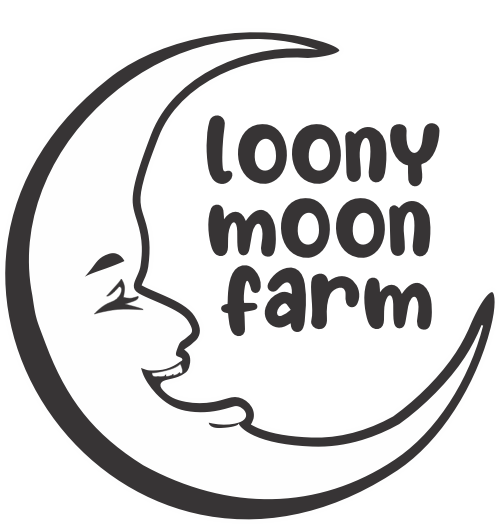Björn, King of Chickens, a love story
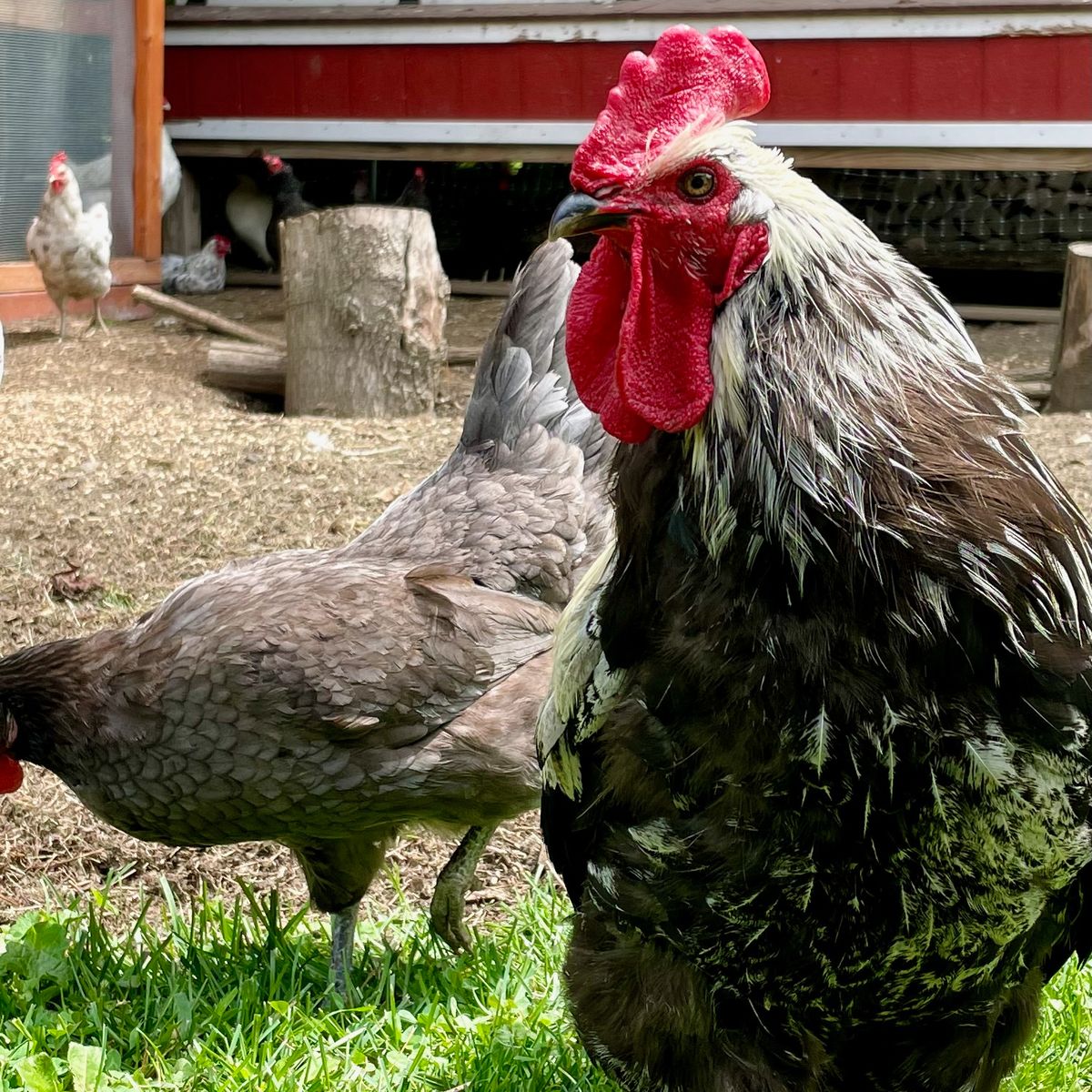
I went through several iterations of roosters before I settled on Bjorn. He's everything I wanted in a rooster! 🥰
For a lot of reasons, it's difficult picking the right rooster. The biggest difficulty is coming to terms with managing the roosters that don't make the cut. Those roosters make a different sort of cut ...
Over the last two years, in searching for my one true roo, I've hatched dozens of eggs. Most of the eggs were hatched out of the nesting box here on the farm. I only hatch the green eggs since I like those the most, and I want to preserve the Isbar genetic characteristics of my flock.
However, I did order 12 eggs from Greenfire Farms in Florida last summer. They are very serious and knowledgeable chicken breeders, and have a large number of different breeds they're helping to maintain.
I know Greenfire is able to import this breed from Sweden periodically, so I bought their eggs to introduce some new genes to our mini pool.
Bjorn was born out of this batch of 12 eggs!
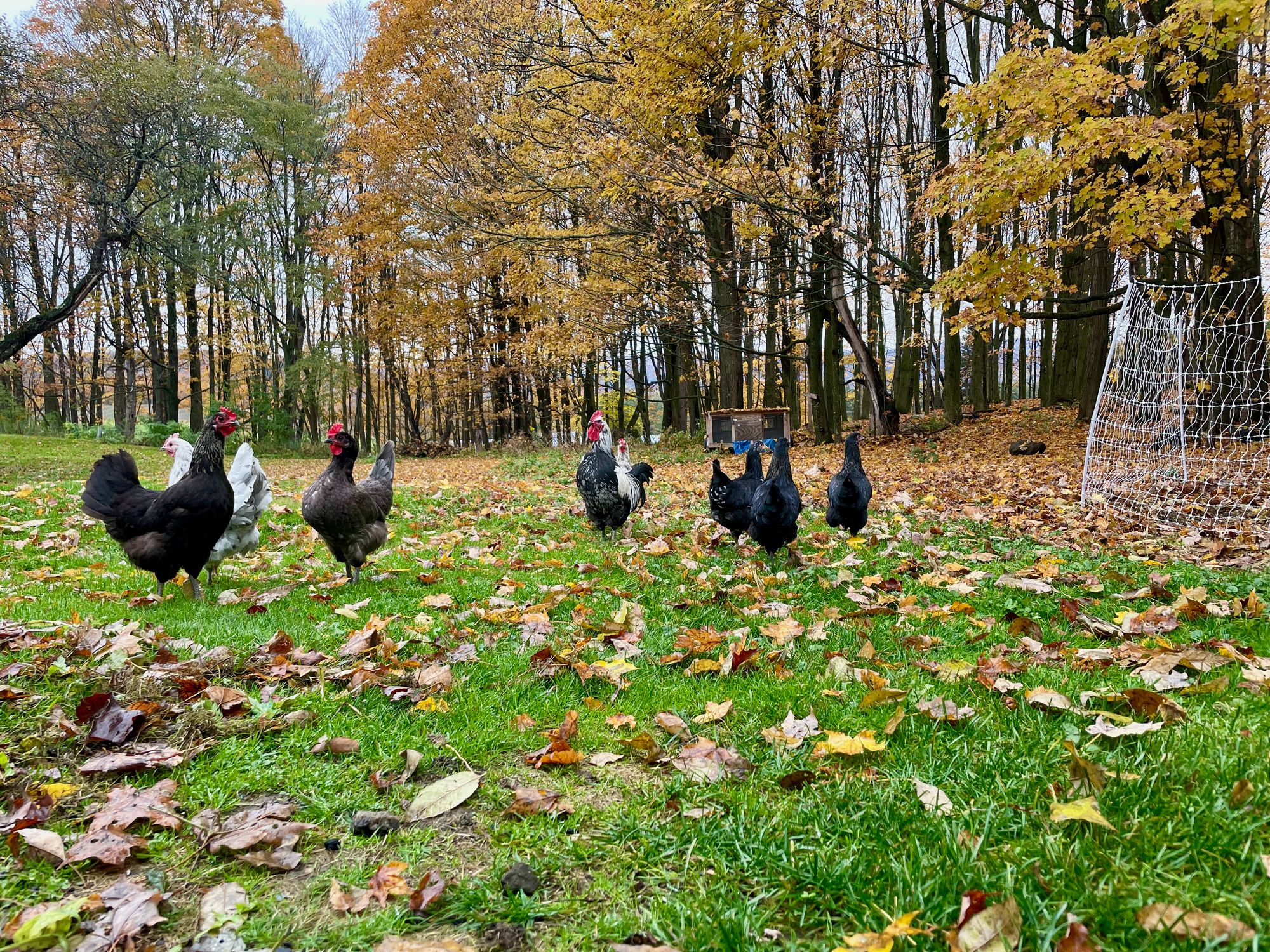
So, the Isbar breed comes in three different colors, if you're not aware. The breed was developed in the 1950's by a serial chicken inventor and Catholic monk called Martin Silverudd. ("Silverudds Blue" is actually another name for the breed)
Martin Silverudd was looking for a sex-linked chicken, with a single red comb, and that would naturally produce green eggs. Sex-linked chickens are those where the hen and rooster are different colors from birth. They allow you to know a chick's gender immediately after they hatch.
He never finished the project before he died, so nowadays we have a breed that only partially conforms to his dream.
He got the green eggs; in fact they are one of the only non-cross breeds that produces a green egg. Each successive generation produces green eggs.
Many times if you hatch a green egg it won't produce green eggs on its own because it came from a cross-breed pairing made specifically for that purpose.
He was still in the process of sex-linking when he died. For that reason, the breed still has three colors (black, blue, and "splash" white and black speckled). Hens or roosters can be either color.
As you'll see in this chart below, the breeding results of these three colors gets very complicated. I'm sure there are people working out how to reach Silverudd's dream breed; one day maybe it'll exist!

My dream rooster needed to satisfy a few things. Firstly, I really wanted a black rooster. I love the dark, black base color and contrasting white hackle feathers. Plus, the tail feathers are irridescent green and blue. They shimmer as Bjorn struts around the yard.
Secondly, I had to consider the rooster's crow. I was going to have to hear this crow every day and any hour, so it was going to have to be a good one.
And I tell you what, I had one blue rooster in the running last year. He was beautiful, prissy, and the right temperment. However, his crow sounded like ... I can't even describe it. It sounded like a demented Indian war cry, howling from the depths of some otherworldly dimension. It was as if an Apache war chief killed by some American solidier centuries ago had come to seek revenge on me in particular! I couldn't take it.
Bjorn's crow, however, is great. Simple, short and to the point.
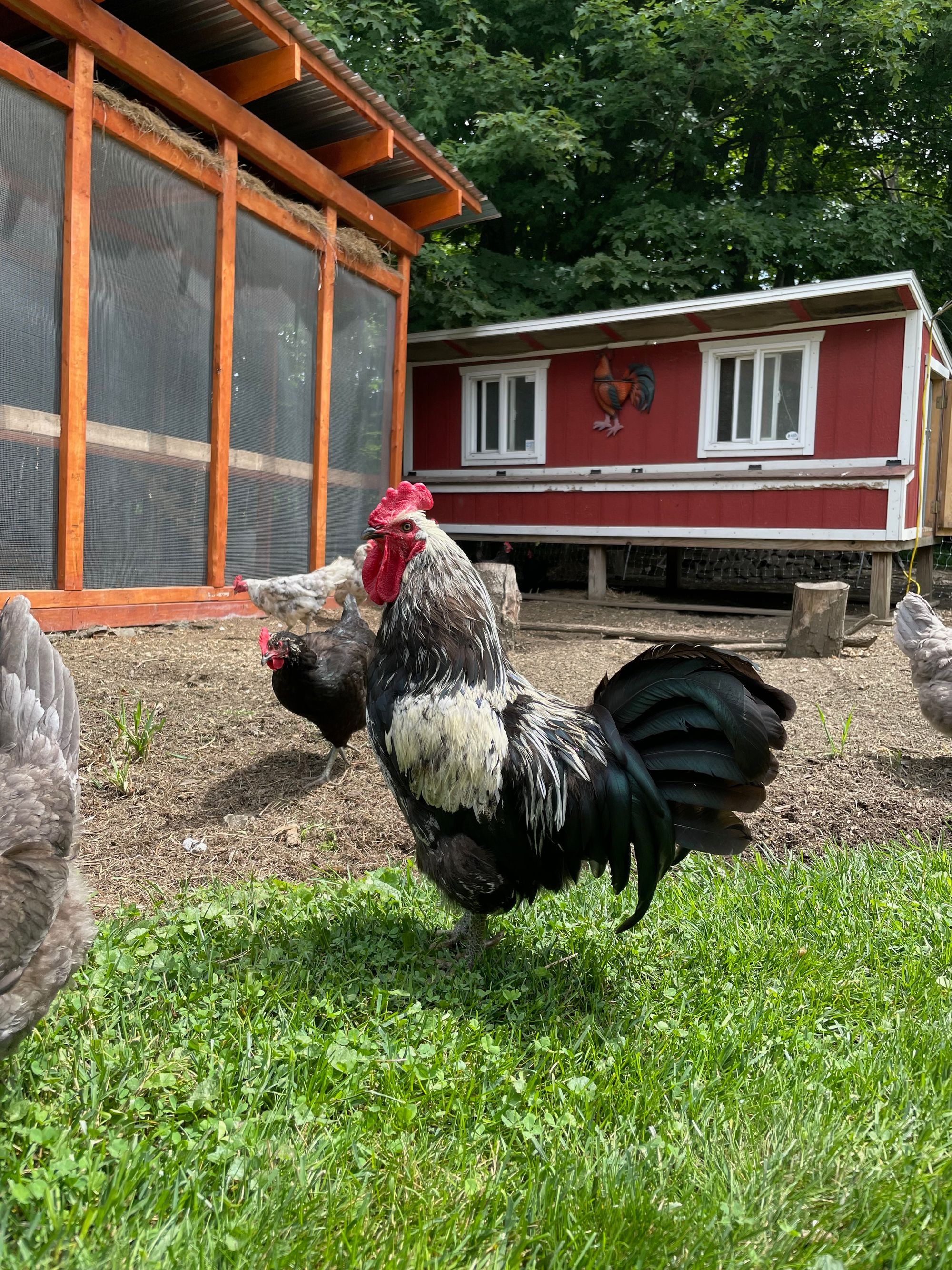
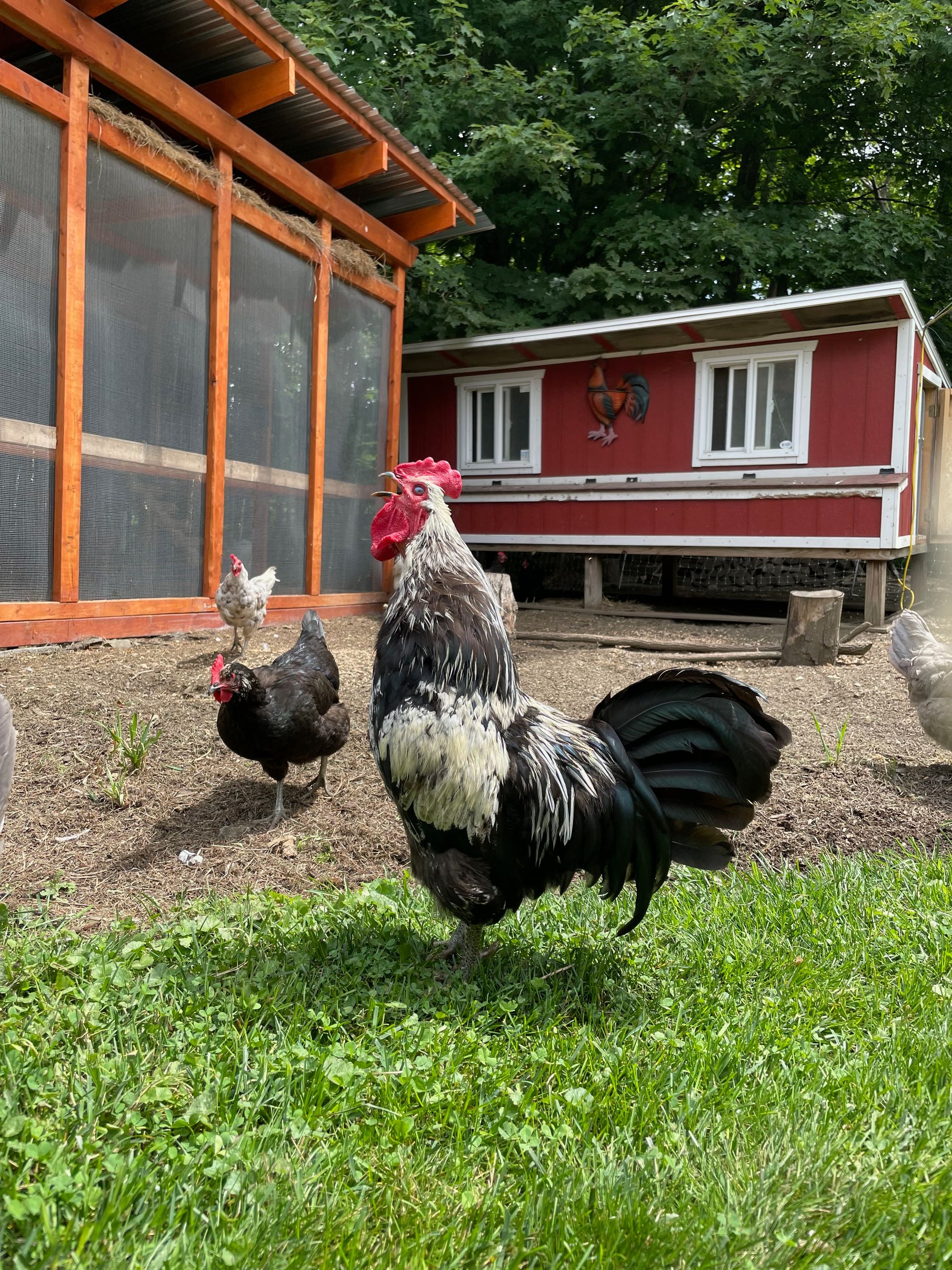
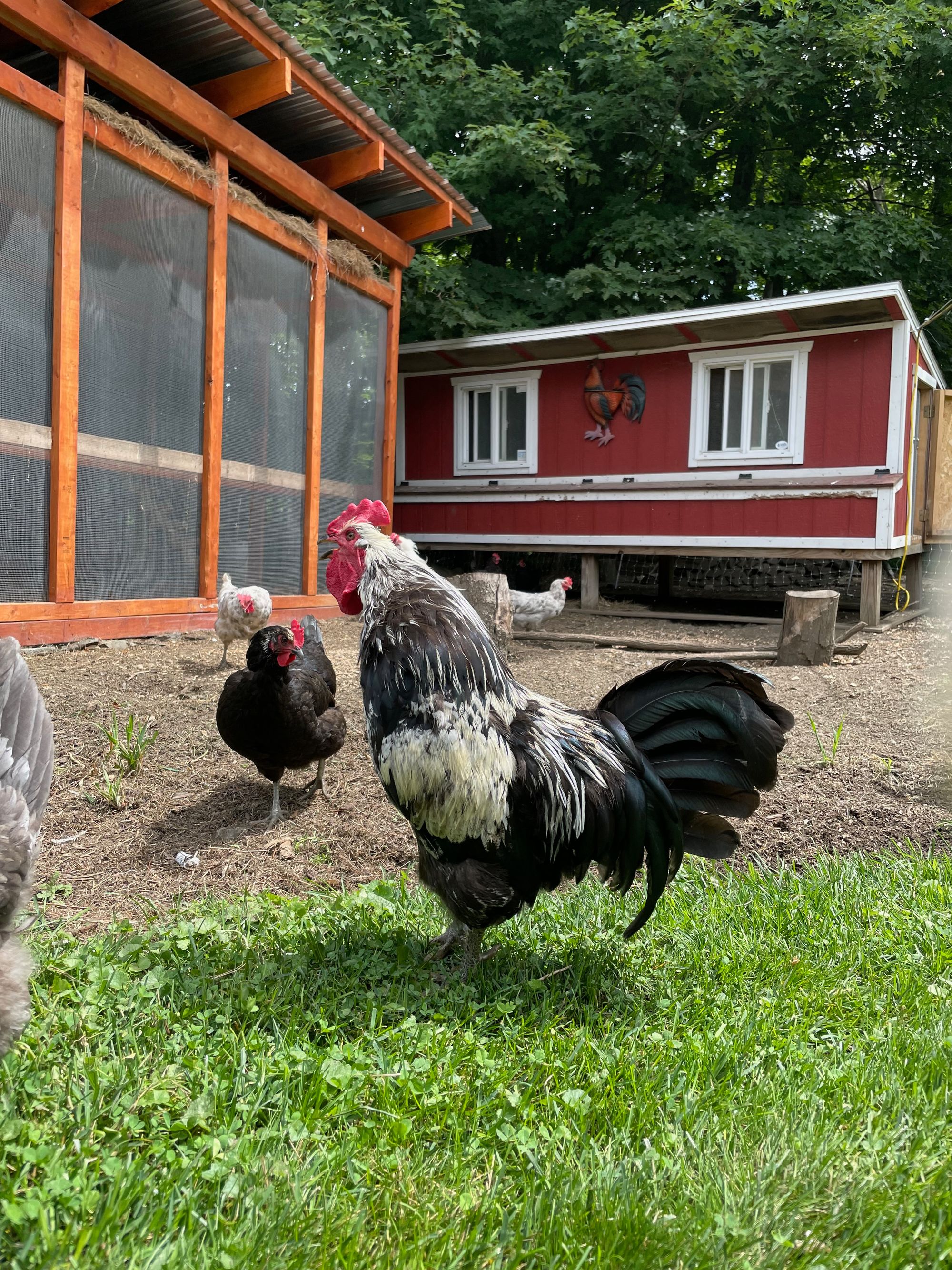
Lastly, Bjorn's temperament is fantastic. It might be his best quality! This is one of those times when, "he's got a great personality," is a winning compliment!
He's never attacked me, hasn't even made a move on me at all. He'll stay about 5 feet away from me if I'm in range of the hens, following me around as I work outside. I take this as a sign of respect. He knows not to mess with me, but he's still letting me know he's there and fully capable of defending his ladies.
If there's a single, startled peep from one of the hens, he races over to check on her. He lowers his body and head down, all the more aerodynamic, and runs toward the noise no matter how loud! His black wings puff out in the wind as he swoops into action, like a feathered Batman. I know this guy will keep the hens safe or die trying.
Also, he's excellent about "feeding" the hens. He doesn't literally put food in their beaks. He just alerts the hens when there's food around. It's a particular sound, repetive, short clucking noises. As he sees a hen aproach, he'll pick up bits of food and toss it flamboyantly into the hair. He doesn't eat it! He picks it up and tosses it, showing the hens his bounty.
Naturally, the hens are very impressed.
When the hens have swarmed around him, greedily gobbling every crumb of food around him, he still doesn't eat. He prances around them, fluttering his wings in the breeze, one eye on me with a knowing gaze.
I imagine he's showing me his job well-done, neither needing nor caring for my praise.
